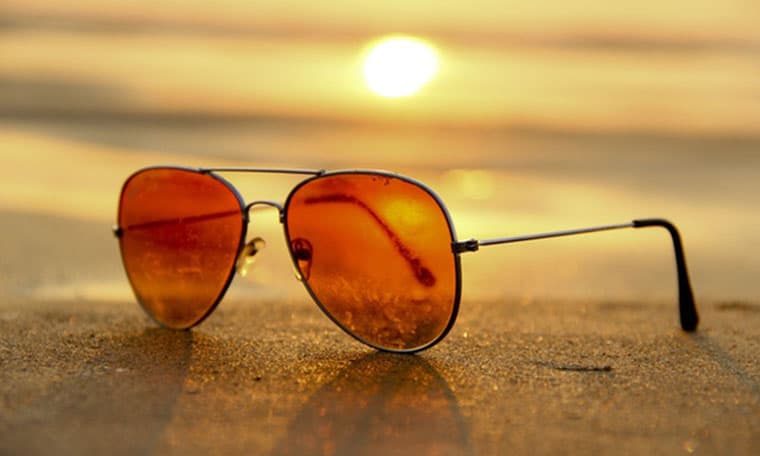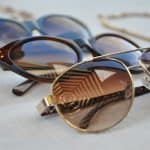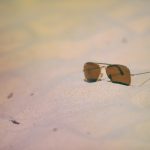Sunglasses or sun glasses are a form of protective eyewear designed primarily to prevent bright sunlight and high-energy visible light from damaging or discomforting the eyes. They can sometimes also function as a visual aid, as variously termed spectacles or glasses exist, featuring lenses that are colored, polarized or darkened. In the early 20th century they were also known as sun cheaters. The American Optometric Association recommends sunglasses whenever a person is in the sun. to protect the eyes from ultraviolet radiation (UV) and blue light, which can cause several serious eye problems.
In the early 1920s, the use of sunglasses started to become more widespread, especially among stars of movies. It is commonly believed that this was to avoid recognition by fans, but an alternative reason sometimes given is that they often had red eyes from the powerful arc lamps that were needed due to the extremely slow speed film stocks used. The stereotype persisted long after improvements in film quality and the introduction of ultraviolet filters had eliminated this problem.
“Yours is the light by which my spirit’s born: – you are my sun, my moon, and all my stars.”
― E.E. Cummings

Inexpensive mass-produced sunglasses made from celluloid were first produced by Sam Foster in 1929. Foster found a ready market on the beaches of Atlantic City, New Jersey, where he began selling sunglasses under the name Foster Grant from a Woolworth on the Boardwalk. By 1938 Life magazine wrote of how sunglasses were a “new fad for wear on city streets … a favorite affectation of thousands of women all over the U.S.” It stated that 20 million sunglasses were sold in the United States in 1937, but estimated that only about 25% of American wearers needed them to protect their eyes.
Polarized sunglasses first became available in 1936, when Edwin H. Land began experimenting with making lenses with his patented Polaroid filter. Sunglasses offer protection against excessive exposure to light, including its visible and invisible components.



